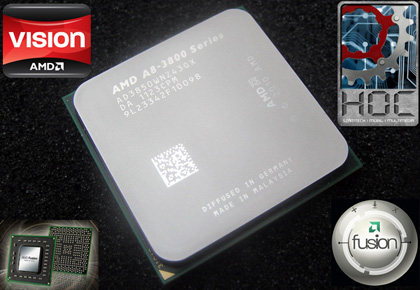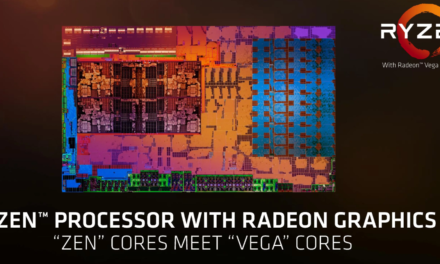
We tried it: AMD A8-3850 APU - Introducing AMD Llano, i.e. the "big" Fusion

Results of our measurements:

Processor tests:
Synthetic and other measurements

The SuperPi is a relatively old and not very modern measuring program, it can handle only one thread, however, it is still very popular today, so it is not usually missed by us. This program has been a specialty of Intel processors for many years, AMD models usually come from a decent distance, and it’s no different now. Even with a run of 1M, there are huge differences, so it’s no wonder the field breaks apart at the biggest 32M calculation. The Sandy Bridge models fight in a separate league, but more interesting is the relationship between the Phenom II and the A8-3850 APU at the same clock, as in the longer term the APU was able to bring more than 1 minute to its predecessor. Obviously, the situation is different on the original clock of the 970 BE.

WPrime, like the SuperPi, is a calculation meter, but it can now take advantage of running multiple cores or running multiple threads. You can see that, the field jumped a little more, and to my surprise, the Phenom II 970 BE took the lead at 3500 MHz. He is followed by 2,9k with 2600 GHz, four cores. The A8-3850 APU’s performance can be enjoyed so much that it was able to beat the Phenom again at the same clock, even if not by a big difference.

The Fritz 12 is no stranger to us either, which is a chess program with a built-in measurement module that shows how many times faster a given central unit is than a 1 GHz Pentium III using a multiplier in addition to a score. This number also brought a 4k victory over 4 cores and 2600 threads, but the 3,5 GHz Phenom also kept up with it for a long time. The A8-3850 once again brings the form that it runs better clock-to-clock than the Phenom II, but the difference isn’t significant right now.

A utility called TrueCrpyt can be used to calculate AES encryption. Well, since the 2600k hardware supports this kind of operation, it came as no surprise that it stepped down from AMD. Behind it runs the 970 Black Edition, which runs at its original clock speed, which the APU was once again able to beat at the same clock speed, so it increasingly seems that minimal performance gains can be expected in terms of CPU power as well.

In the final version of AIDA64 1.8 we ran the usual measurements, the results are very diverse. Under Quenn, the APU only has a chance against the Phenom working at the same clock, but it also manages to beat it, it can be slowly said that in the usual way. In Photoworxx the stunt fails, the A8-3850 is in last place. AMD units show surprising power in Hash, the 2k shortened to 2600 cores and HT lags ugly behind, but even the 4-core setting gets knocked out by AMDs, which is then won by the Phenom II X4 BE, so the APU slips behind. There are no huge differences under VP8 either, the good news is that Llano’s child can get over Phenomon here too. The FPU Julia shows the strength of the Intel CPUs, followed by the Phenom at the original clock speed, but at the same frequency, the APU wins again, adding that the difference is minimal.
Rendering, encoding, compression

The Cinebench R10 is an older version of the popular rendering application, but is still perfect for measurement today. In the first round, we examined single-fiber work, followed by measurements using all fibers. The architectural advantage of Intel CPUs can be well traced here, there is still room for improvement for AMD, maybe the Bulldozer. However, it also looks nice that the K12 was able to accelerate somewhat compared to its predecessor. The setting captured on two cores (trying to mimic the Core i3-2120) in the second test with the HT is able to defeat the native 2900-core Phenom set at 4 MHz. The former can just be beaten by the A8-3850, which is good news compared to the Phenom, but the gentleman here is the Sandy Bridge.

Cinbench R11.5 is the latest version where measurement is done using all cores and fibers. On 4 cores, the 2600k and Phenom 970 BE will step, while at the latter 2,9 GHz it will again only get out of the APU. The Sandy Bridge CPUs captured by the two cores bleed against all their opponents, in vain for Hyper-Threading. Another good point for Llano, he managed to improve a bit here as well.

In the Photoshop test, the time taken to complete a finished script (calendar builder) was measured using a stopwatch, and then the results were summarized. Of course, the less time the operation took, the faster the CPU was considered. This race also favors Intel, with the fresh APU although it wins over Phenom, the difference is in tenths, meaning it’s almost insignificant.

Video conversion is an important part of our test, which was again measured using Cyberlink MediaEspresso by transcoding a 1080i resolution raw material recorded with a JVC HD camera into various formats without using GPU acceleration, in other words relying solely on processor power. The program is able to take advantage of the capabilities inherent in multi-core CPUs, but it does not despise the high clock signal either. It’s clear that each format is nicely able to shuffle the cards, but in most places the 2600k is the gentleman with 4 cores. The bottom line for the A8-3850 is that it managed to beat its Phenom counterpart running at the same clock each time, with a bigger or smaller difference.

With Winarr, we have reached the end of tests that specifically evaluate CPU power. The program takes advantage of multi-threaded instruction execution, so the 2600/4k 4/2 stunt is no surprise, with a 4/970 setting, the Phenom 3,5 BE is wedged between 2,9 GHz and XNUMX GHz. The current strongest representative of the Llano platform failed this time, which he did so many times, i.e. this time he could not beat the Phenom on the same frequency.
















